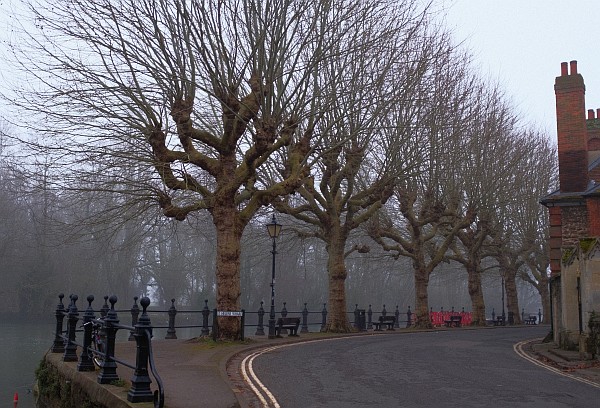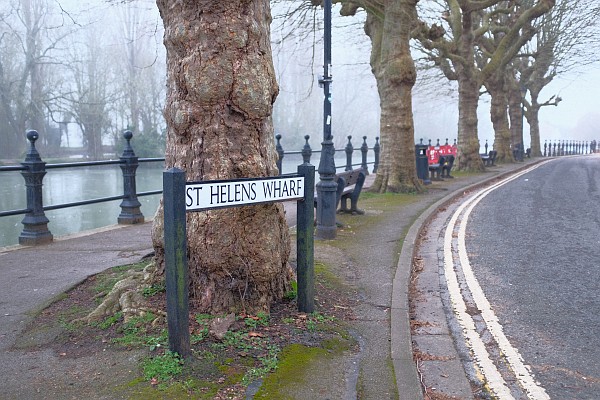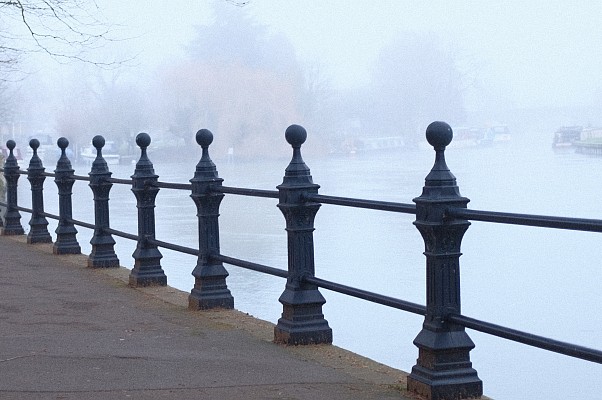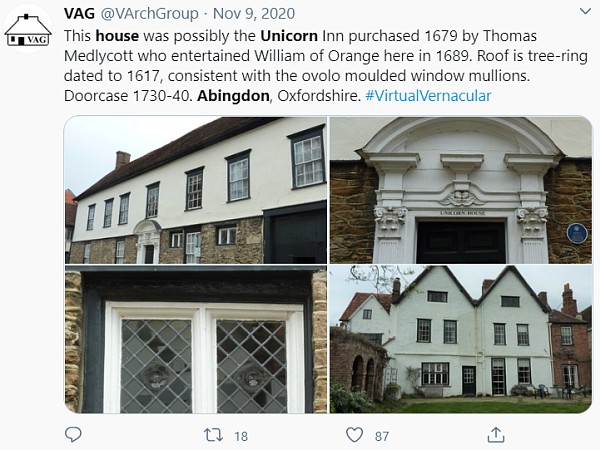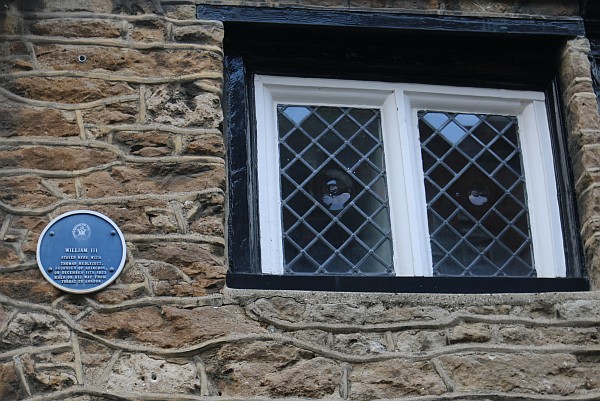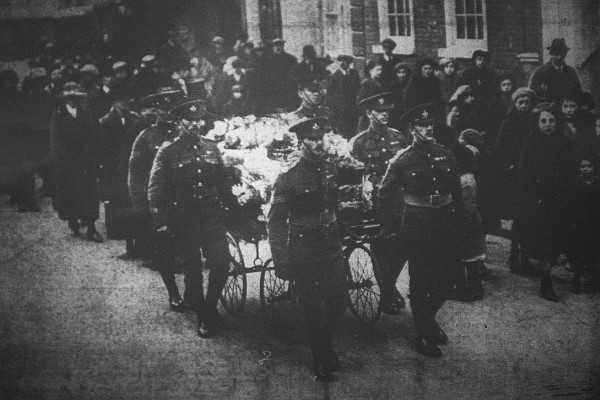
4th December
The Abingdon Bowling Club held a dinner on Thursday evening last at the Lion Hotel when the president (Alderman A E Preston) presided. Around 50 members sat down to an excellent spread. Toasts and songs followed, and an enjoyable evening was spent.
The Abingdon Cattle Market on Monday last was well attended and the supply of fat and store* stock penned improved. The 34 fat beasts realised from £44 to £57. A cow from the estate of the late Mr Randell Higgins, Burcote, fetched £79. Fat sheep realised from £6 15s to £7 6s. There was a limited supply of calves, but nearly 100 (mostly store) pigs were penned and realised good prices. * Store cattle are those that aren’t quite ready for slaughter. These cattle will be stored over the winter on a forage diet to keep them growing but not laying down fat then fattened up the following summer.
At the Board of Guardians meeting last week the Master reported that in the Union House there were 75 inmates from their own Union area, and 57 from Oxford, as against 73 and 59 respectively the corresponding period last year.

In an article in the Oxford Journal illustrated there are pictures of inmates returning and being reunited at Cowley Workhouse having been sent to other workhouses during the war.

The Comrades of the Great War held another enjoyable whist drive at their rooms, Ock Street, on Thursday evening last. The prize winners were Messrs H. Pabot, E Fisher and M Messenger, and Messrs “B 4” Edgington and H Smith.
The Abbey Lodge of Mark Master Masons held their annual festival at the Municipal Buildings, Abingdon, on Thursday last, when the installation of Mr E J. Belcher as the W.M. ** took place. ** Worshipful Master

It was reported widely in Ireland that ‘The funerals of the murdered cadets took place on Saturday 4th December with full military honours, in different parts of the country of the R.I.C cadets who were killed in the I.R.A ambush near Macroom. Of these Major F. Hugo, M.C., was buried at Southgate, and Captain W.A. Pallister, at Burngreave Cemetery, Sheffield. Lieutenant W. Hooper Jones was interred at Holcombe, near Bury; Captain Francis Crake, commander of the patrol, at Elswick, Newcastle; Cadet W. T. Barnes at Bexhill Churchyard, Sutton, and Cadet Noel Philip Graham at Abingdon.’
18th December
The annual Abingdon Christmas fat stock show and sale took place in Abingdon Market on Monday 13th December. There were over 60 fat beasts penned; fat sheep numbered about 130, calves 31 and pigs 154. There were also penned for sale about 300 head of geese and fowls, but there were no turkeys.
In a match at Abingdon in the North Berks Charity Shield Competition,between Abingdon Town and Brightwell, the home team won easily by 4 goals to nil.

A very successful sale of work, in aid of the Abingdon Congregational Church Funds, was held in the Schoolroom on Thursday evening the opening being performed by Mrs Rippon, wife of Councillor Claude Rippon, of Springfields, Abingdon, to whom a pretty bouquet was presented by little Miss Audry Greenwood. Amusements and a concert by an Oxford Party formed part of the programme. The proceeds amounted to over £70.
County Bench. Monday. Before-Messrs W. Brewer, M. T. Tatham, W. Hayes and E. H, Green.—Arthur Baden belcher, of Mill Street, Wantage was summoned for driving a motor car at Besselsleigh, on November 29th with insufficient lights. The constable in stating the case said that one headlight and one sidelight was lighted properly but the others were too dim to be of any use. The Bench fined defendant £6.
The only case before the Judge at the County Court Wednesday last week was that a claim for wages, £2 4s 2d, Nora Matthews, a domestic servant formerly employed by George Dulake, of Boars Hill. It appears that plaintiff went home to Abingdon and failed to return the same evening through missing the Oxford bus and so stayed at home during the night, and in consequence Mrs Dulake told her to go back home. The plaintiff’s mother appeared for her, and said her daughter was now at Rugby in service. On being questioned as to the terms of engagement Mrs Matthews said her daughter made the terms and she did not know what the terms of service were. His Honour said that plaintiff should have attended to give the information, but probably thought it was not worth her while to come from Rugby and therefore thought the best thing to do was to non-suit *** her. *** non-suit – stop (a lawsuit or the plaintiff bringing it), either by voluntary withdrawal by the plaintiff, or by a finding by the judge that the plaintiff has failed to make a legal case or bring sufficient evidence.
A peal of 720 changes of Cambridge Surprise Minor was given on St Nicolas Church bells last week for the first time by local bell ringers. The ringers were W. Holifield, treble; J Honey,2; Mrs A. E Lock, 3; H Holifield, 4; A.E. Lock, conductor 5; and F. Barret, tenor.

The Abingdon Charity Trustees proceeds from the sale of Rouny Meads, Kennington: was £699 6s 0d. which they have invested in Metropoli an consolidated Stock. The Trustees are giving the usual gifts of clothing at Christmas, being four men’s overcoats and four women’s gowns at £1 10s and £1 5s each respectively.
The Abingdon Choral Society gave a capital rendering of Joan of Arc in the Abingdon Corn Exchange on Wednesday evening last week to a good audience. The soloists were Miss Ivy Sheldon Peach and Messrs E Young, W. Bevir and W. James. A capital orchestra accompanied, assisted by an organ.
An inquest was held by Mr Challenor on Monday on the death of Selina Sutton, aged 83 years, living by herself in a cottage at Sutton Wick, Abingdon, the Friday previous. It appears from the evidence that deceased was found sitting in the chair downstairs bleeding from the head and a wound in the temple. Medical assistance was secured but the deceased died from haemorrhage from the wound, caused by the deceased falling downstairs.— Verdict accordingly.

Thank you for the extracts to the Faringdon Advertiser and Vale of the White Horse Gazette on the British Newspaper Archive, and Oxford Journal Illustrated for the pictures. The advertiser had no Abingdon news in the editions of 11th and 25th December.
